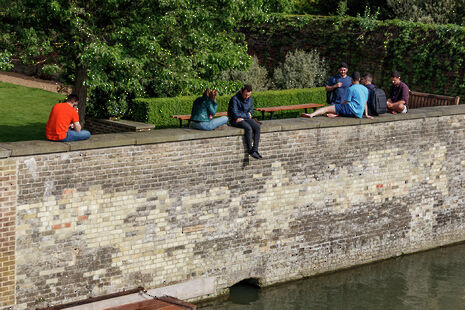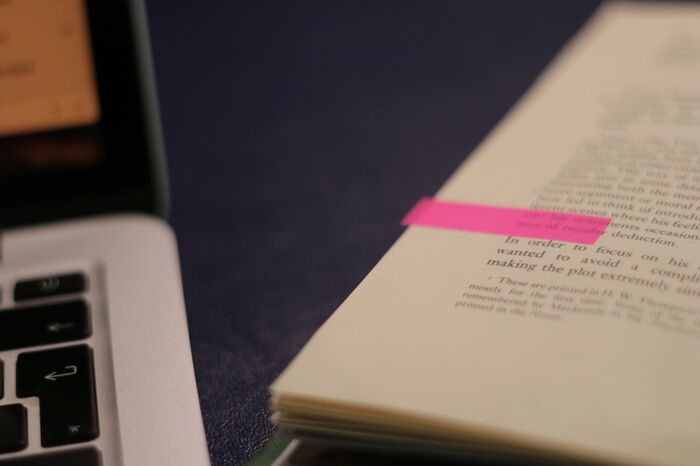The six charts that explain Cambridge’s latest admissions figures
Headline figures of record state-school and BME intakes mask the full picture of last year’s acceptance round

Last year, the 2017 Cambridge admissions cycle first encountered the brunt of students’ post-Brexit uncertainty. And though it saw modest improvements, the University of Cambridge’s intake has continued to see racial, regional, and school-type disparities across colleges and in individuals’ success rates – trends which have plagued the University’s admissions for years.
Steep decline in EU applications amid post-Brexit dubiety
Perhaps the most dramatic change in admissions last year was the steep decline in applications from the EU, showing the lowest number of EU applications since 2013 amid post-Brexit uncertainty.
Fees are a significant source of uncertainty; it still remains unclear whether 2019 applicants will pay home or international student fees for the duration of their course. EU students starting their degree in 2018, however, will pay home student fees.
A lack of information on the part of EU students has, perhaps, compounded their misgivings, with nearly one-third of EU respondents to the International Student Survey stating they were not aware that students starting degrees in Britain in 2018-19 will pay the same fees as domestic students throughout their course.
Clear racial disparities persist in acceptance rates
Clear signs of racial disparities continue to affect Cambridge admissions, with men of Chinese origin exhibiting the highest success rates out of Cambridge applicants’ racial and gender groups. 29.1% of this group of applicants is ultimately accepted, compared to the average success rate across all groups of 23.9%.
White women followed closely behind with a success rate of 28.1% – 15.6 percentage points higher than Pakistani women, the group with the lowest success rate, aside from applicants who did not indicate their race. An 11.2 percentage point difference was also found between white and black women – black men and women held success rates of 16.1% and 16.9% respectively.
In 2017, women held a success rate of 21.2% across all racial groups, a rate slightly higher than that of male applicants, who held a success rate of 19.0%. The gender disparity in admissions last year was marked by both milestones and declines. Last year’s cycle marked the first year in Cambridge’s history when women received more offers than men, though it also exhibited the lowest percentage of women as a proportion of accepted students since 2014.
Success rates for black applicants in 2017 improved on 2016 figures, where black students saw a 12.9% success rate, compared to success rates of 33.6% for Chinese applicants, 29.9% for Indian applicants, and 28.1% for White applicants. 2016 had also marked the first time on record that Cambridge accepted more black men than Etonians into undergraduate degree courses.
Peer influence a crucial factor for acceptances
Cambridge continues to primarily draw on applicants from areas where young people are the most likely to attend university in the first place – more than half of the first-year cohort consists of students from areas in quintile 5 of the government’s POLAR3 classification. Regions in the first quintile sent the smallest number of students to Cambridge.
Cambridge’s POLAR3 quintile 1 intake of 4.5% indicates slight improvement on recent years, compared to 2015 and 2016 intakes of 2.9% and 3.3%, respectively.
The system classifies areas across the UK based on how likely young people are to participate in higher education, and groups areas into five quintiles – quintile 1, which has the lowest level of participation, to quintile 5, consisting of the most advantaged areas.
A Varsity investigation last month found a glaring gap in access efforts for students in Scotland, Wales, and Northern Ireland, where only a couple of colleges bear a disproportionate level of responsibility for targeting students in the first and second POLAR3 quintiles. Despite 45% of young Londoners classed as quintile 5 under POLAR3 classifications, 17 Cambridge colleges have access outreach programmes in London, compared to just two colleges with efforts targeted in Wales.
Computer science and classics: the two ends of the state-independent school divide
Computer Science last year displayed the highest proportion of state school offer-holders, with a ratio of offer-holders from state and independent schools close to 4.50 to 1.
Psychological and Behavioural Sciences, too, saw a high proportion of state school offer-holders, alongside History & Politics and Architecture.
Just five courses had a higher proportion of offer-holders from independent schools than state schools: Classics, History of Art, History & Modern Languages, Asian & Middle Eastern Studies and Theology.
Classics and History of Art were the most extreme courses on the spectrum, displaying the highest levels of offer-holders from independent schools. For Classics, the ratio of state to independent school offer-holders was 0.71 to 1; with History of Art, it was 0.79 to 1.
Independents and grammars comprehensively over-represented at Cambridge
The consistent trend of independent schools dominating Cambridge’s intake extended to last year’s batch of admissions. The proportion of students coming from comprehensive and grammar schools, as well as sixth form colleges and other state schools largely followed patterns from past years too.
For applications from home students attending UK secondary schools, the 2017 admissions cycle had an state-school intake of 64.1%, compared to 35.9% for independent schools. Across the UK as a whole, 90% of university students hail from state schools.
State school intake shows 30 percentage point disparity across colleges
Just two colleges’ intakes were predominantly from independent schools – St John’s and Robinson – with St John’s displaying the lowest proportion of state school admissions, just as in 2016. 48.6% of the College’s first-year cohort comes from state schools, compared to 46.0% in 2016.
Robinson, which had the lowest proportion of state school students in 2015 and 2014 – 48.4% and 47.4% respectively – accepted 48.8% of its cohort in 2017 from state schools, just 0.2 percentage points above the proportion at St John’s.
Mature colleges aside, Churchill topped other colleges with a state school intake proportion of 76.5%.
The University announced last week that it had been “collaborating with colleges across Cambridge” to implement a foundational programme for students from disadvantaged educational backgrounds by 2020. It is unclear, however, which Cambridge colleges would introduce the programme, and whether this will be sufficient in alleviating disparities in state-school intake across the University.
 News / Cambridge academics stand out in King’s 2026 Honours List2 January 2026
News / Cambridge academics stand out in King’s 2026 Honours List2 January 2026 Interviews / You don’t need to peak at Cambridge, says Robin Harding31 December 2025
Interviews / You don’t need to peak at Cambridge, says Robin Harding31 December 2025 Comment / What happened to men at Cambridge?31 December 2025
Comment / What happened to men at Cambridge?31 December 2025 News / AstraZeneca sues for £32 million over faulty construction at Cambridge Campus31 December 2025
News / AstraZeneca sues for £32 million over faulty construction at Cambridge Campus31 December 2025 Features / “It’s a momentary expression of rage”: reforming democracy from Cambridge4 January 2026
Features / “It’s a momentary expression of rage”: reforming democracy from Cambridge4 January 2026











